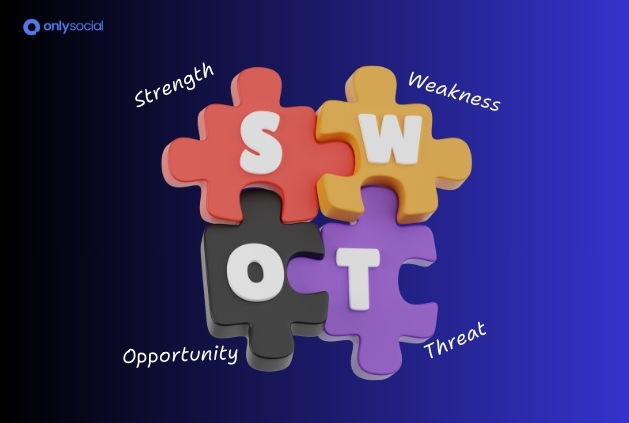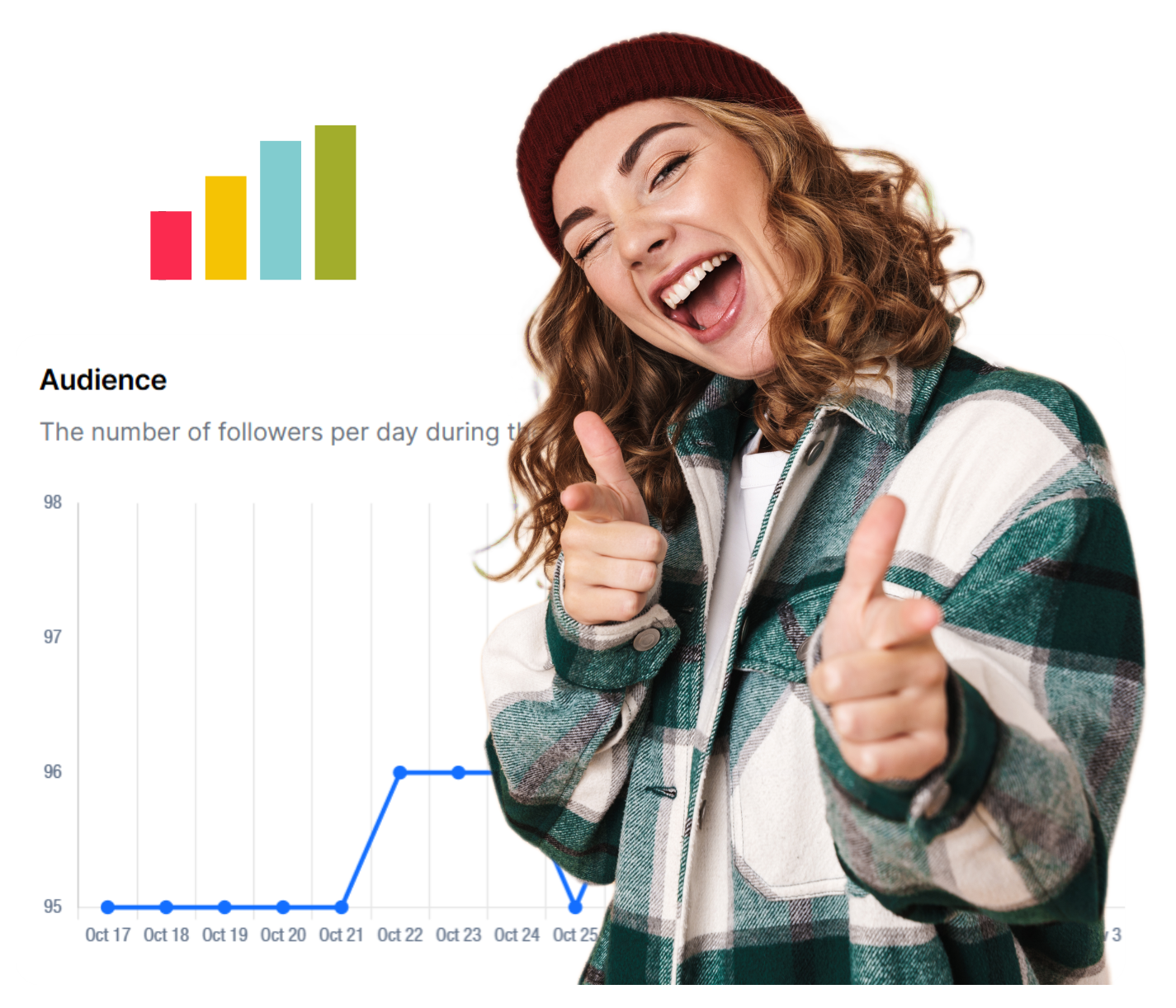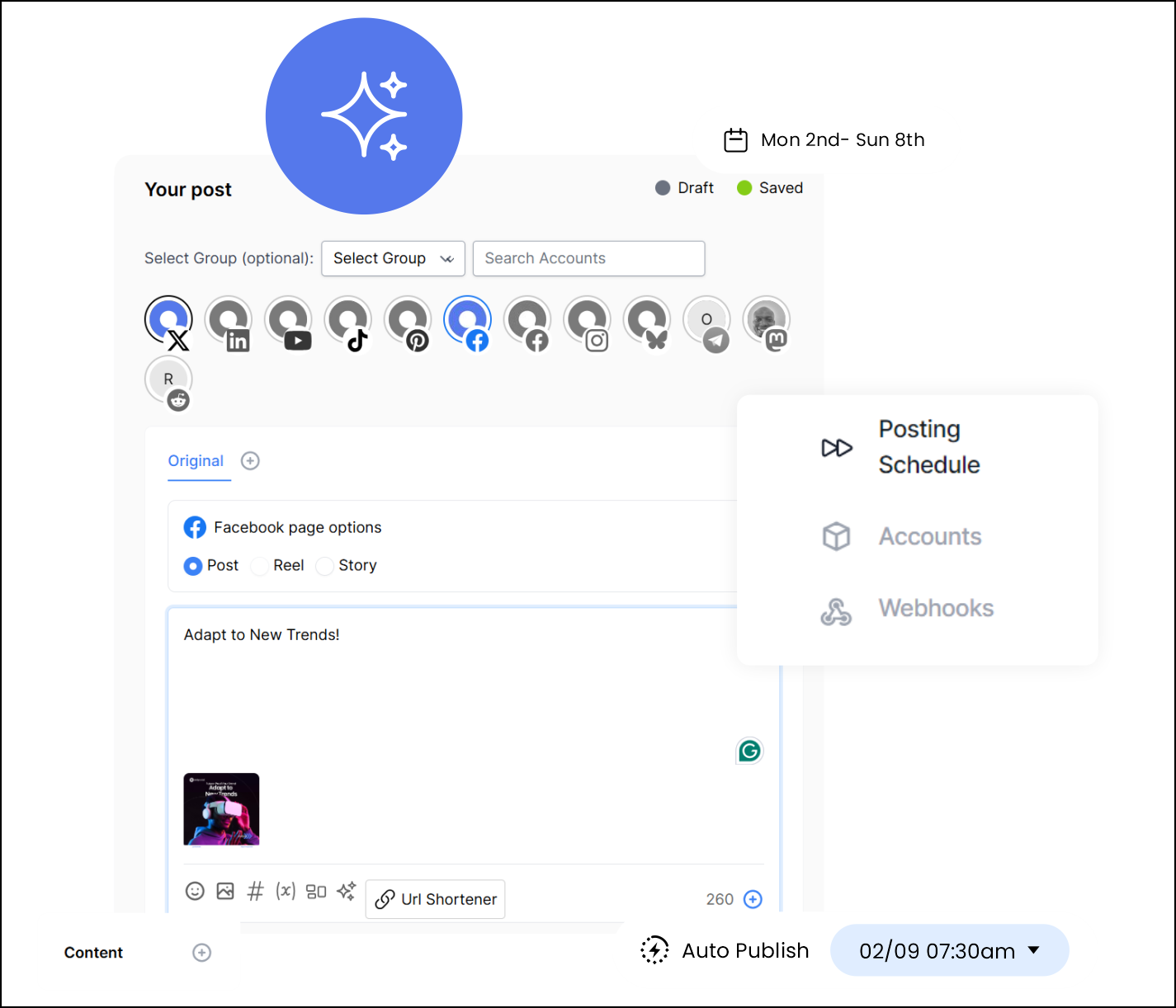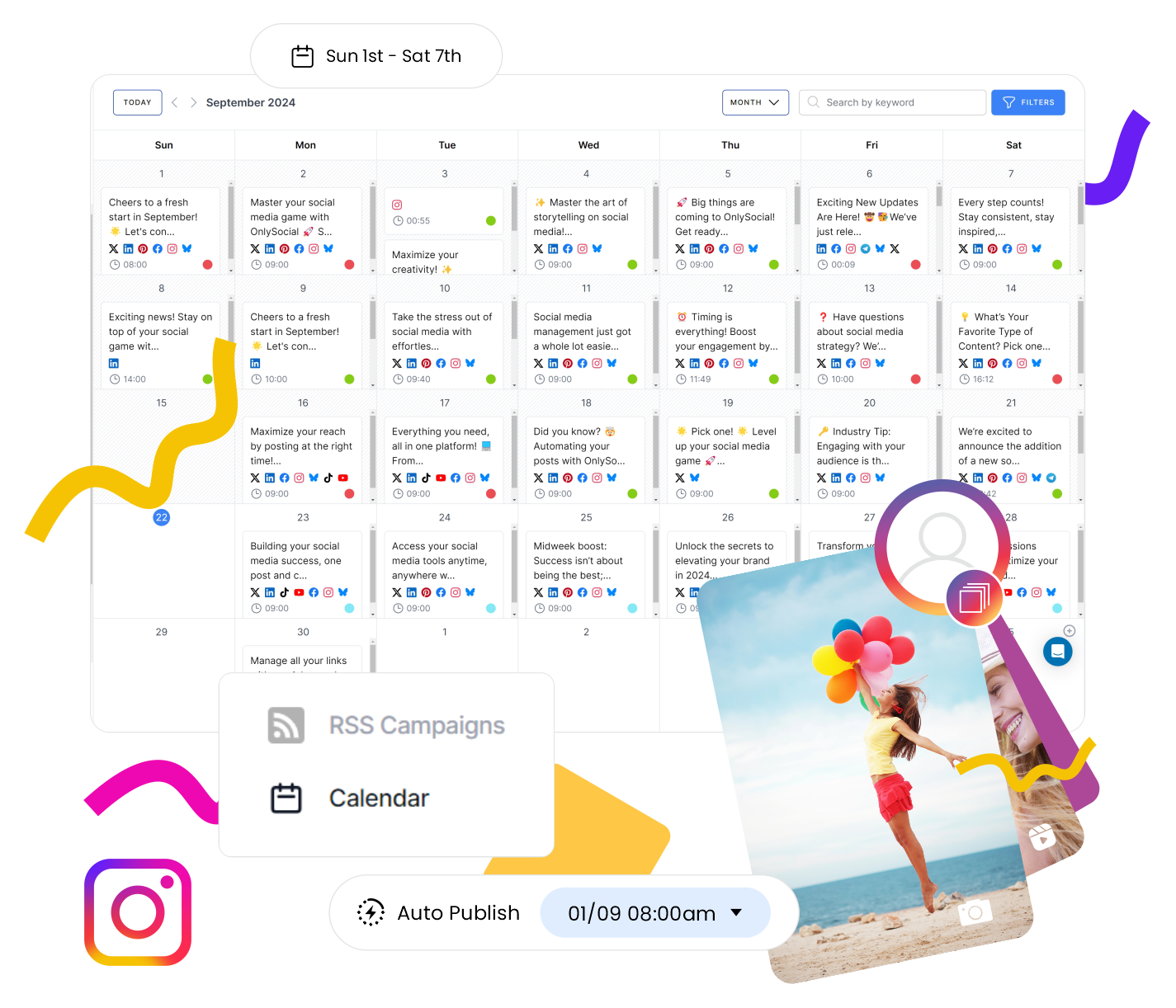How to Cross-Post on Social Media [The Right Way in 2025]
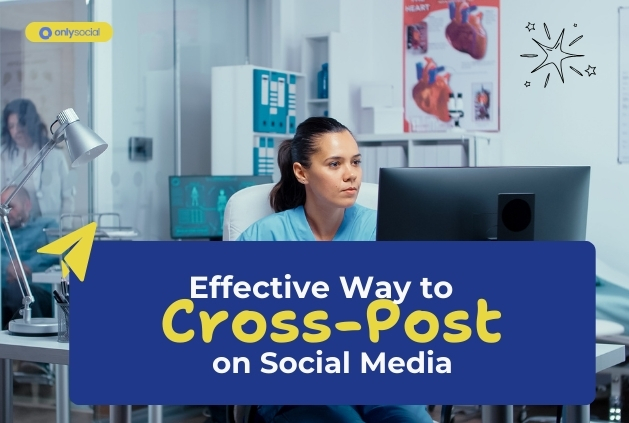
Let’s be real – no one has time to write five totally different posts for five different platforms every single day. Not even the big brands.
That’s where cross-posting comes in. And no, it’s not “lazy” or “cheating.” It’s called being smart with your time and keeping your sanity intact.
In 2025, the social media game is faster, louder, and more crowded than ever. If you’re managing multiple platforms, cross-posting isn’t just helpful; it’s survival.
But here’s the catch: doing it wrong can make your feed feel like a copy-paste graveyard. Doing it right? It makes your content stretch further without losing that spark.
In this guide, we’ll show you what cross-posting on social media is and how to do it effectively. Let’s get into it.
Table of Contents
- 1 What exactly does cross-posting mean?
- 2 Why Should You Cross-Post Across Multiple Social Media Platforms?
- 3 How to Include Social Media Cross-Posting in Your Social Media Strategy?
- 4 How to Cross-Post Effectively for Multiple Social Media Accounts
- 5 How OnlySocial Helps You Cross-Post on Social Media
- 6 Best Practices for Cross-Posting on Social Media
- 7 Boost Your Engagement with Cross-Posting Strategies
- 8 FAQs
What exactly does cross-posting mean?
Cross-posting simply means sharing the same piece of content across multiple social media platforms.
You might upload a video to Instagram and then share that same clip to TikTok, Facebook, and LinkedIn, with a few tweaks here and there.
Some do this manually – copy, paste, repeat. Others use smart cross-posting tools to get the job done faster and more efficiently.
The content itself can be anything, including photos, videos, a link to your blog, stories, or even a quick poll. The main idea behind cross-posting on social media is to save time and keep your brand active across all platforms without reinventing the wheel every time.
When done right, cross-posting can be a powerful tool for reaching more people and boosting engagement, all without burning out your content team.
Why Should You Cross-Post Across Multiple Social Media Platforms?
If you’re juggling Instagram, Facebook, X (formerly Twitter), TikTok, and maybe even LinkedIn, welcome to the club.
Managing them all can feel like a full-time job. That’s exactly why cross-posting is such a game-changer. If you have never considered this option, here’s what makes it worth doing:
Save time and effort on content creation
Creating brand-new content for every platform can quickly lead to burnout. But with cross-posting, you make one great piece of content and share it in more than one place.
You can always tweak it to match the tone of each platform, but you won’t be starting from scratch every time. This means less stress and more consistency.
Reach more of your audience
Not everyone follows you on every platform – and that’s totally normal. By sharing your content across multiple channels, you increase the chances of it being seen.
Your audience on TikTok might miss a post that your Instagram followers loved. Cross-posting helps you catch more eyeballs with the same great content.
Showing up regularly on different platforms helps build trust, recognition, and credibility. When people see you active everywhere, it tells them you’re serious, consistent, and worth paying attention to.
Cross-posting keeps your brand front and centre, without the scramble of daily brainstorming.
Easier management, fewer headaches
Keeping up with multiple accounts can quickly become overwhelming. Cross-posting helps simplify your social media calendar and makes planning way easier.
Especially if you’re using a tool like OnlySocial, you can schedule once and sit back while your posts go live everywhere. Smooth, right?
How to Include Social Media Cross-Posting in Your Social Media Strategy?
If you want cross-posting to actually work, and not just feel like copy-paste chaos, it needs to be part of a solid social media strategy.
That means it’s not just about blasting the same message everywhere. It’s about being intentional, knowing your audience, and making each post count.
So, what’s a social media strategy, really?
At its core, it’s your roadmap. It outlines what you want to achieve on social, how you plan to get there, and how you’ll measure success.
Think of it as your game plan – complete with goals, target platforms, audience insights, content ideas, and clear team roles.
Now, here’s where cross-posting fits in.
Start with your pillar content
Pillar content (also called content buckets) is basically the big themes your brand talks about. Maybe it’s tips for small business owners, behind-the-scenes stories, product tutorials, or industry news.
These themes help you stay focused and consistent, and make it easier to spot what’s cross-post-worthy.
Match your content to the right platforms
Not everything belongs everywhere. A behind-the-scenes selfie might kill it on Instagram, but fall flat on LinkedIn.
A thoughtful carousel post might do wonders on Facebook, but feel clunky on X.
Once you know your pillars, you can map out where each piece fits best – and where it can be adapted and shared.
Don’t overcomplicate it
You don’t need a totally different plan for every platform. One solid strategy, plus a smart cross-posting approach, will do the trick.
The key is understanding where your audience hangs out and what kind of content they enjoy on each platform.
Set a schedule, track what works
Once your content themes and cross-posting plans are in place, it’s time to decide how often to post and when.
Tools like OnlySocial can help you plan, schedule, and keep everything organized in one place. From there, track performance, tweak your posts, and keep learning.
Now, let’s see some practical steps to cross-posting on social media.
How to Cross-Post Effectively for Multiple Social Media Accounts
You already know the importance of cross-posting and how you can slip it into your content strategy. But to get the most out of cross-posting, you will need a bit of planning and platform know-how.
So, let’s show you how you can cross-post the smart way. Here’s a step-by-step approach to make things easy for you.
1. Choose the right platforms for your content
Remember, we said cross-posting isn’t about blasting the same post everywhere and hoping for the best. It’s actually more about matching your content with the right platforms.
Each social platform has its own style and rhythm:
- LinkedIn thrives on expert insights and long-form thought leadership.
- X (formerly Twitter) favors short, punchy takes.
- Instagram and Pinterest are all about the visuals.
- TikTok and YouTube Shorts are built for short-form video magic.
The trick? Pair platforms that naturally suit the same kind of content:
- Got a short-form video? Great – post it on TikTok, Instagram Reels, and YouTube Shorts.
- Writing a blog post? You can spin it into a LinkedIn update and maybe a quick X thread.
When your content and platform match, cross-posting feels effortless, and your audience notices.
2. Create your cross-posting content calendar
Without a plan, cross-posting across accounts can feel really overwhelming. That’s why you will need a content calendar. It keeps things neat, focused, and stress-free.
Here’s what to include:
- Your content themes – What topics are you covering this week or month?
- Where it’s going – Not every post needs to be everywhere. Decide what belongs where.
- When to post – Spacing out your content can actually boost engagement. Posting the same thing everywhere at once is not always ideal.
- How to repurpose – A blog post today could become an infographic for Instagram next week, and a carousel for LinkedIn the week after. Stretch that content like a pro.
3. Tweak your content for each platform
This is the golden rule: Don’t just copy and paste. Adapt.
Each platform has its uniqueness, and a little tweaking can go a long way in making your posts feel native.
Here are a few key things to keep in mind:
Character limits:
- X: 280 characters (unless you’re paying…)
- Instagram: 2,200
- LinkedIn: 3,000
- Facebook: 5,000
- TikTok: 4,000
But here’s the deal: most users don’t read beyond the first couple of lines. So lead with the good stuff.
Aspect ratio:
- Instagram Reels: 9:16
- Instagram feed posts: 4:5
- Facebook posts: 1:1
- LinkedIn: 16:9 or 1:1
- X (Twitter): 16:9
- TikTok: 9:16
If you want a safe middle ground, go with 4:5 for images and 9:16 for videos.
Video length:
- Reels: up to 3 mins
- TikTok: up to 10 mins
- Facebook: up to 240 mins
- YouTube: up to 12 hours
Platform-specific features:
- Instagram captions don’t allow clickable links.
- Facebook doesn’t have native polls.
- TikTok still loves a good hashtag stack.
- LinkedIn allows PDFs as carousel-style posts.
Cross-posting without a scheduling tool? That’s like trying to drive cross-country with no map, no playlist, and a leaky tyre.
A great scheduling tool doesn’t just save time; it makes you look like you have a whole content team behind you.
Here’s what to look for:
- Choose a tool with full platform support:
Make sure the tool actually covers all the platforms you use. If it doesn’t support LinkedIn, Instagram, or TikTok, you’ll end up juggling things manually, and that defeats the purpose.
- Ensure it has one dashboard to rule them all:
Jumping between apps is a productivity killer. A proper scheduling tool should let you plan, preview, and manage everything in one spot. - Smart customization:
The best tools let you edit your drafts before posting. That means you can fine-tune captions, crop visuals, and tailor posts for each platform without creating them from scratch.
That way, your audience gets content that feels native, without knowing it came from the same original piece.
5. Track your content’s performance to gain key insights
To make your cross-posting strategy actually work, you need to know what’s landing and what’s not. That’s where analytics come in.
Here’s what to keep an eye on:
- Top-performing posts:
What’s getting the most likes, shares, or saves? If your Instagram Reel is blowing up but your LinkedIn post is crickets, there’s a lesson there. - Engagement rates:
Don’t just chase views. Look at comments, shares, and saves. These tell you what people truly care about. - Follower growth:
if you get a spike in followers after a post, that’s a green light to make more like it.
Use these insights to tweak your strategy. Maybe your audience loves videos but scrolls past carousels. Or maybe your cheeky tone works on Facebook, but LinkedIn needs a more polished approach.
The goal isn’t just to post everywhere. Rather, it’s to post smarter, based on what actually works.
How OnlySocial Helps You Cross-Post on Social Media
Even with the best strategy in place, cross-posting can get frustrating if you’re stuck jumping between platforms, tweaking posts manually, and losing track of what’s scheduled where.
That’s why having the right tool beside you really does make all the difference.
OnlySocial was built to make cross-posting smoother, quicker, and less overwhelming, especially if you’re managing multiple accounts or juggling content for clients.
Here’s how it helps:
Schedule and manage posts across all the major platforms, including the likes of Instagram, Facebook, LinkedIn, X, TikTok, YouTube, and more – all from one dashboard.
Tweak per platform without starting over
Draft your post once, then make small edits for each platform. No need to rewrite everything. You can sync or un-sync edits with just a click.
Plan visually with a clean calendar view
OnlySocial helps you see what’s going out and when, using color-coded labels and filters to stay organized, even when handling a packed schedule.
Use AI for extra support
Got a caption idea? OnlySocial’s built-in AI can help rewrite it for different platforms or suggest a fresh draft when you’re stuck. You can also generate quality visuals and hashtags relevant to your audience and content.
Collaborate with your team
You will be sharing ideas, editing posts together, leaving comments, and getting approvals all in one place. No messy email threads or lost Google Docs.
Track what’s working
With its advanced analytics, you can see how your posts are performing across platforms. You can create reports, track trends, and adjust your strategy based on real numbers.
With OnlySocial, cross-posting becomes less of a chore and more of a rhythm. It gives you time back to focus on what actually matters, which is creating content that connects.
Best Practices for Cross-Posting on Social Media
Cross-posting can save you loads of time, but only if you do it right. Otherwise, you risk looking robotic, out of touch, or even spammy.
To keep your content feeling fresh and platform-appropriate, here are a few best practices to follow:
Don’t treat every platform the same
Yes, you’re sharing the same core message, but how you say it should change. A post that works on Instagram might need a more professional tone on LinkedIn or a shorter version for X.
Tailor your captions, hashtags, and tone to match the vibe of each platform.
Watch out for platform limits
Every platform has its own rules, including character counts, image sizes, video length, and more. Double-check these before posting.
A great post can fall flat if it’s cropped weirdly or gets cut off mid-sentence.
Space out your posts
It’s tempting to post everywhere at once, but spreading your posts out can help boost engagement. Plus, if your audience follows you on more than one platform, it avoids making your feed feel repetitive.
Track results and learn from them
Not every post will perform the same across platforms – and that’s okay.
Keep an eye on your analytics. You’ll start to notice patterns: what works where, what needs adjusting, and where your audience is most engaged.
Boost Your Engagement with Cross-Posting Strategies
Cross-posting is one of the easiest ways to stay active on multiple platforms without doubling your workload. It helps you reach more people, stay consistent, and make the most of every piece of content you create.
With a tool like OnlySocial, the whole process becomes much easier.
You can plan your posts, tweak them for each platform, and keep everything organized – all in one place.
If you’re looking to grow your brand, get more engagement, and save time, cross-posting is a great place to start. Give it a try and see how much smoother your social media routine can be.
FAQs
Is it okay to post the same content across different platforms?
Yes, it’s perfectly okay as long as you’re smart about it. Cross-posting helps you save time and reach more people. But ensure it connects with the audience and follows the best practices specific to each platform.
Is there an app for cross-posting on social media?
Absolutely. There are several tools out there. One of them is OnlySocial. It is an excellent option if you’re looking for a simple, all-in-one platform. It lets you manage multiple accounts, tailor posts for different platforms, collaborate with your team, and even track performance – all from one place.
Are there any downsides to cross-posting across multiple social media platforms?
There can be, especially if it’s done without thought. Posting the exact same content everywhere without adapting it can make your brand feel impersonal or out of sync with platform trends.
That’s why it’s important to tweak your posts and be intentional about where and how you share each piece of content.
How do you cross-post on social media?
Start by creating your content, then decide which platforms it’s best suited for. Use a scheduling tool like OnlySocial to draft and adjust each version of the post.
Tweak the format, captions, and visuals based on the platform you’re posting to. Then schedule it all from one dashboard. And you’re good to go!

